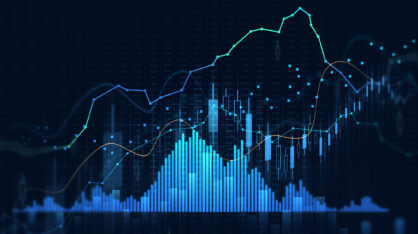Introduction
An essential part of today’s globalized economy is the international monetary system, a complex framework governing worldwide financial interactions. Underlying international trade and relationships are agreed conventions for currencies to be exchanged. Continuously evolving to reflect dynamic global activities, this system’s roots extend far back yet it adjusts to modern circumstances (Kugler & Straumann, 2018). Understanding the history of monetary arrangements, fluctuating exchange rate regimes and significant institutions like the International Monetary Fund and World Bank involves examining linked topics such as currency markets and influences on relative values. Each interlacing element contributes to the web of interconnectivity shaping global finance. In our globally connected world, where nations’ economies have become increasingly intertwined, the worldwide monetary framework is taking on a more pivotal part than any time in recent memory. Flexible limits between local and worldwide budgetary issues make the framework a central player in forming financial approaches, exchange connections, venture methodologies and even the diplomatic relations between countries.
The meaning and role of worldwide fiscal arrangements have simply multiplied as worldwide connections have deepened, given its impact on all places regardless of their stage of progress. Whether a highly industrialized nation engaging in commerce with developing economies or a little developing country searching for money-related help from worldwide associations, the framework empowers and structures those intricate collaborations. The advent of latest technology and virtual currencies, adjustments in international strength dynamics, shifts in monetary ideologies, and the emergence of latest financial players in addition underscore the system’s ever converting and multifaceted nature. In essence, the worldwide monetary machine is more than an insignificant monetary mechanism; it displays the heartbeat of the worldwide community, taking photos the underlying forces that strength our international today. By studying the international monetary gadget, we take a step in the direction of comprehending the elaborate internet of worldwide relationships, economic techniques, and coverage alternatives that shape our everyday lives. It opens the door to a deeper records of approaches countries collaborate and compete on the worldwide degree, how businesses navigate worldwide waters, and the manner people, even at the close by diploma, are impacted with the aid of worldwide financial tendencies. It is a subject that now not best enlightens however demanding situations us to assume severely about the arena we stay in and the future we’re forging collectively.
History of the Monetary System
Tracing the records of the worldwide monetary machine takes us on a adventure through precise eras, reflecting the evolution of human civilization itself. From the ancient barter structures, in which objects were straight away exchanged without the use of cash, to the adoption of metal coins as a stylish medium of alternate, cash’s position in society has continually converted. The gold popular, a system wherein currencies were without delay linked to a selected amount of gold, ruled worldwide alternate for a splendid length till the 20th century. The Bretton Woods device become mounted due to the ancient Bretton Woods Conference, which befell in 1944 (Bordo, 1992). The majority of primary currencies were tied to the U.S. Dollar under this association, which changed into also convertible into gold. The Bretton Woods device, however, became overthrown inside the early Nineteen Seventies due to financial pressures and political picks, which opened the door for floating alternate fees, while currencies’ values range in accordance with marketplace forces. The development of the economic tool isn’t only a ancient fact; it also tells a story about how political choices and pressures of the global financial system have customary our international.
Systems for Exchanging Currency
The concept of trade rate structures is significant to information global exchange and finance. It’s not just a rely of numbers and forex values; it is about how countries manage their currencies in relation to others. The fixed trade rate device, where a currency’s fee is tied to something steady like gold or some other foreign money, gives balance however can from time to time be rigid and out of contact with financial realities. In evaluation, the floating exchange charge system allows currencies to transport in line with marketplace forces of deliver and call for (Aizenman, 2019). While this will offer flexibility, it additionally introduces a level of uncertainty and volatility. Hybrid systems try to combine the first-rate of each world, often allowing currencies to flow within a managed range or employing authorities’ interventions to preserve balance. The choice of an exchange charge system is a strategic selection for any nation, with a long way-reaching implications for monetary fitness, trade balance, inflation, and even political balance.
Institutions of international finance like the IMF and the World Bank
The global monetary panorama could be incomplete without bringing up the important roles performed by the IMF and the World Bank. Established at a time while the sector changed into seeking balance after the devastation of World War II, those institutions were tasked with fostering global cooperation and stability. The IMF, recognized for its financial aid and policy recommendation to nations in disaster, acts as a mother or father of worldwide financial stability. Its functions have improved over time to include monetary surveillance, economic help, and technical resource, aimed at selling boom and reducing poverty. The World Bank’s task, meanwhile, is geared in the direction of lengthy-term improvement. Its tasks and economic support recognition on constructing infrastructure, decreasing inequalities, and encouraging sustainable financial boom in growing countries. Together, those establishments shape a cornerstone of worldwide efforts to make sure monetary governance and act as stewards of world economic nicely-being (J. Vestergaard, R. Wade, 2018).
Currency Markets and Determinants of Exchange Rates
The foreign money markets are like the bustling crossroads of worldwide finance. Here, currencies are sold and offered, and trade charges are decided through a multitude of things. Interest prices, inflation, economic performance, political balance, and even speculative trading can dramatically impact a foreign money’s price. For example, high-interest charges would possibly entice overseas traders searching out the nice return on their investments, boosting a foreign money’s price. Conversely, political instability can power traders away, main to a lower in currency cost. These elements, for my part or in combination, make contributions to the day-by-day fluctuations in alternate charges, affecting everything from the price of tour to the rate of imported items (Aizenman, 2019).
Conclusion
In the give up, the global economic gadget is more than a dry, educational subject; it’s far the living, respiratory coronary heart of world commerce and cooperation. From the historical evolution that echoes the societal ameliorations to the intricacies of exchange price management, international economic establishments’ strategic roles, and the vibrant dance of foreign money markets, each factor tells a story of human ambition, innovation, conflict, and collaboration. The gadget’s energy in our interconnected world is beyond dispute. Its destiny will keep conforming, reflecting modifications in technology, politics, economic philosophies, and human values (Belke, Bernoth, & Fichtner, 2011). A thorough knowledge of this multifaceted concern offers a window into the global society’s workings, where finance is both a device and a reflect reflecting our shared human experience. The have a look at of the global financial system is an invitation to discover the complexities of our international, wherein economics meets culture, history intertwines with politics, and wherein the neighborhood becomes international. It is a reminder that our monetary choices are a part of a broader tapestry that affects and is encouraged with the aid of the changing dynamics of our time. A careful exam of this device affords not simply expertise however wisdom and perception into our interconnected globe’s persevering with evolution.




